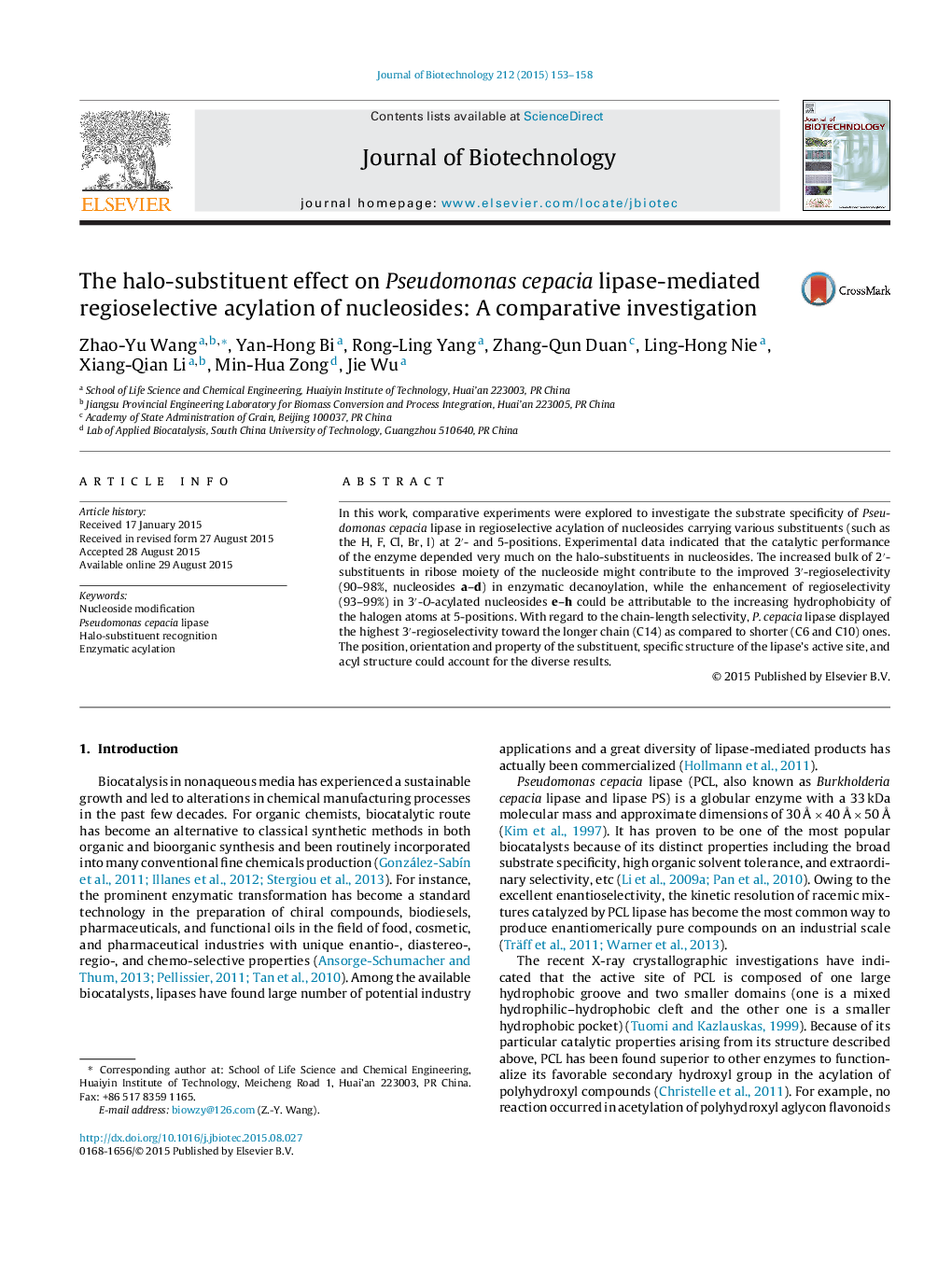| Article ID | Journal | Published Year | Pages | File Type |
|---|---|---|---|---|
| 6490922 | Journal of Biotechnology | 2015 | 6 Pages |
Abstract
In this work, comparative experiments were explored to investigate the substrate specificity of Pseudomonas cepacia lipase in regioselective acylation of nucleosides carrying various substituents (such as the H, F, Cl, Br, I) at 2â²- and 5-positions. Experimental data indicated that the catalytic performance of the enzyme depended very much on the halo-substituents in nucleosides. The increased bulk of 2â²-substituents in ribose moiety of the nucleoside might contribute to the improved 3â²-regioselectivity (90-98%, nucleosides a-d) in enzymatic decanoylation, while the enhancement of regioselectivity (93-99%) in 3â²-O-acylated nucleosides e-h could be attributable to the increasing hydrophobicity of the halogen atoms at 5-positions. With regard to the chain-length selectivity, P. cepacia lipase displayed the highest 3â²-regioselectivity toward the longer chain (C14) as compared to shorter (C6 and C10) ones. The position, orientation and property of the substituent, specific structure of the lipase's active site, and acyl structure could account for the diverse results.
Related Topics
Physical Sciences and Engineering
Chemical Engineering
Bioengineering
Authors
Zhao-Yu Wang, Yan-Hong Bi, Rong-Ling Yang, Zhang-Qun Duan, Ling-Hong Nie, Xiang-Qian Li, Min-Hua Zong, Jie Wu,
